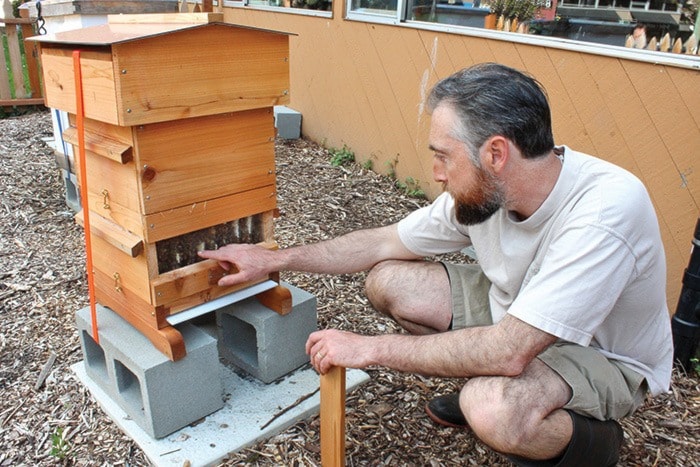Things are abuzz at James Bay New Horizons as the centre is looking to expand its bee hive program in the upcoming months.
Last summer, New Horizons installed two bee hives (one of which came from a beekeeper in Oak Bay and the other from James Bay) and a roughly 400-square-foot pollinator garden as part of a community-based pilot project to teach the public about bees.
Since then, the honey bee colonies have thrived in the environment.
Both colonies survived the winter (they were smaller colonies and were installed late in the season) and produced a full box of honey. Most recently, a local beekeeper donated two more hives to the project, one of which is on display, as well.
“(The hives) had some difficulties, but now they're building up, so there's hope,” said beekeeper Chris Adams. “This time of year they want to be building up very quickly so they can access the nectar resources. They want to have the numbers so they can go and seek that.”
The number of people curious about the bees has also increased. Adams said he often sees people and children stop and watch the bees, as well as a number of regulars who keep a close eye on the hives.
“Many people don't have that opportunity for contact with bees. But they really are fascinating,” said Adams, adding a school will be coming to the centre in May to learn about bees.
“If you watch them coming and going, they've really got such an agenda of their own and it's interesting to think about what they're actually up to.”
The pollinator garden at the front of the centre has also blossomed as a place for all types of pollinators, such as bees and hummingbirds.
Sylvia Cavanaugh is one of three volunteer gardeners. She said it allows her to pursue her love of gardening and interact with the community.
Now, the centre is hoping to expand the project.
Currently, the bee hives are nestled to the right of the building. In order for people to get to the hives, they have to go through the centre, or if the centre is closed, walk the length of Irving Park around the washrooms and through the field.
As part of the expansion and to increase public access to the hives, the centre hopes to add a swinging gate, a path for gardeners, fruit trees and an observation hive in the window of the centre for the public to watch the hive up close.
“It's drawn people out to look into the park but also be involved with a part of nature that they might not have noticed before or might not have even thought about,” said project volunteer Sue Ann Gentry. “What bees are, how they interact and what do they do.”
